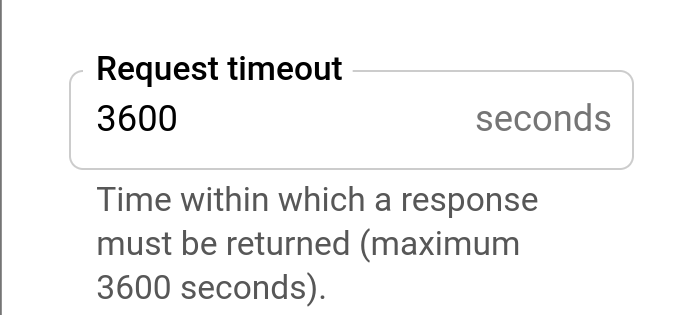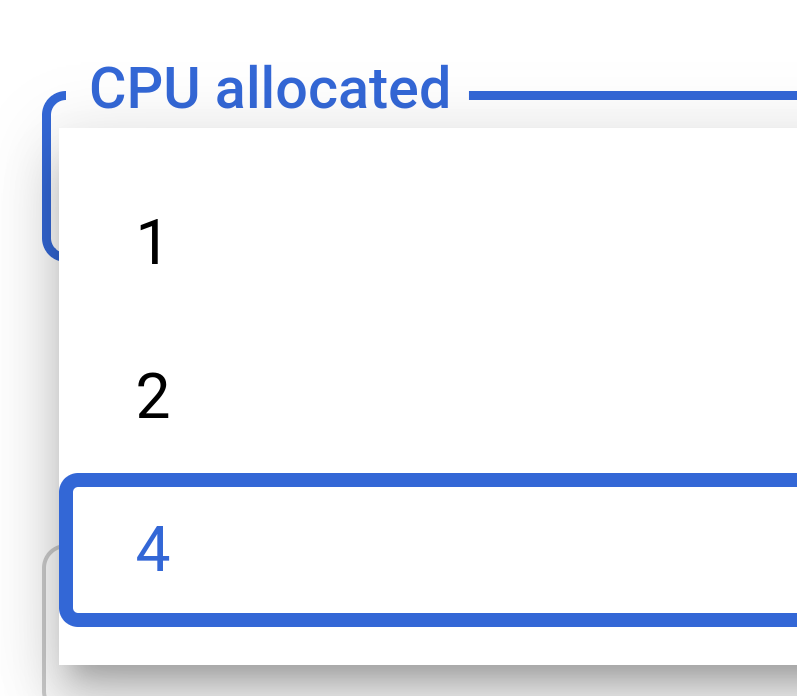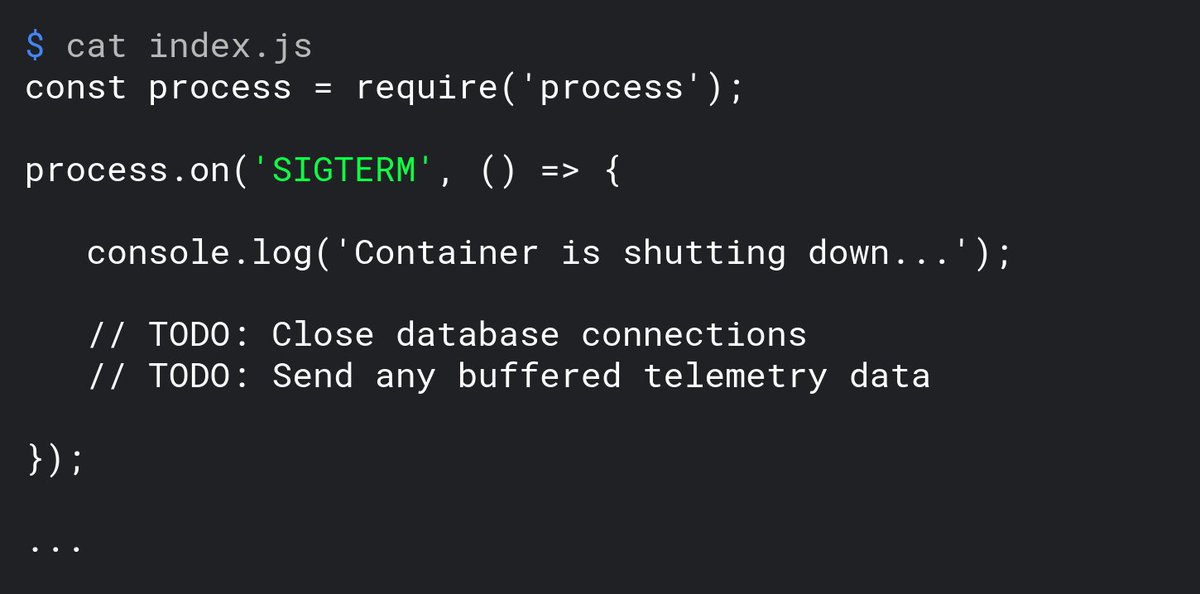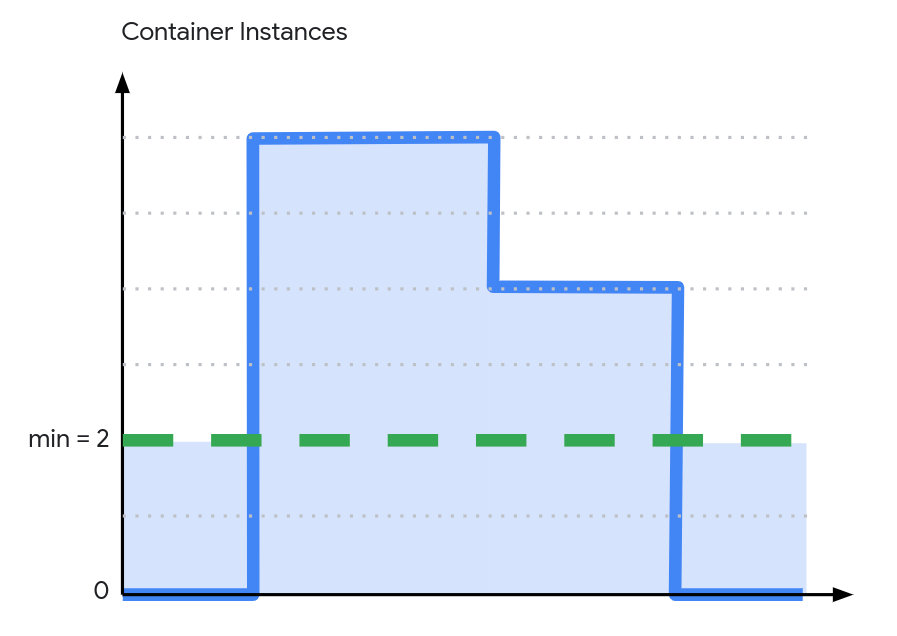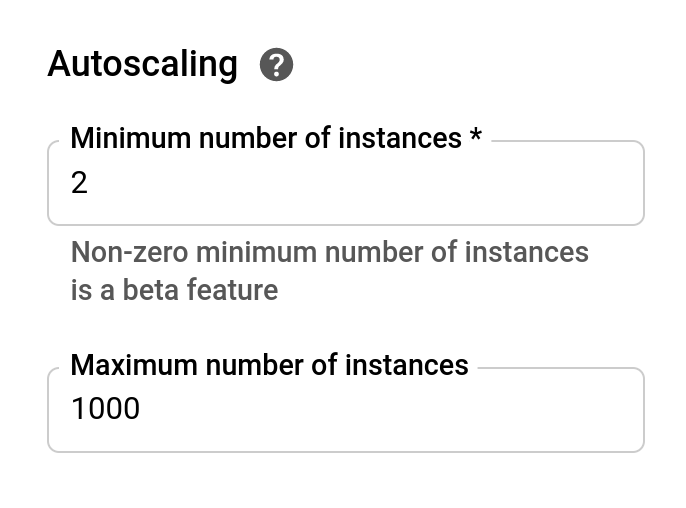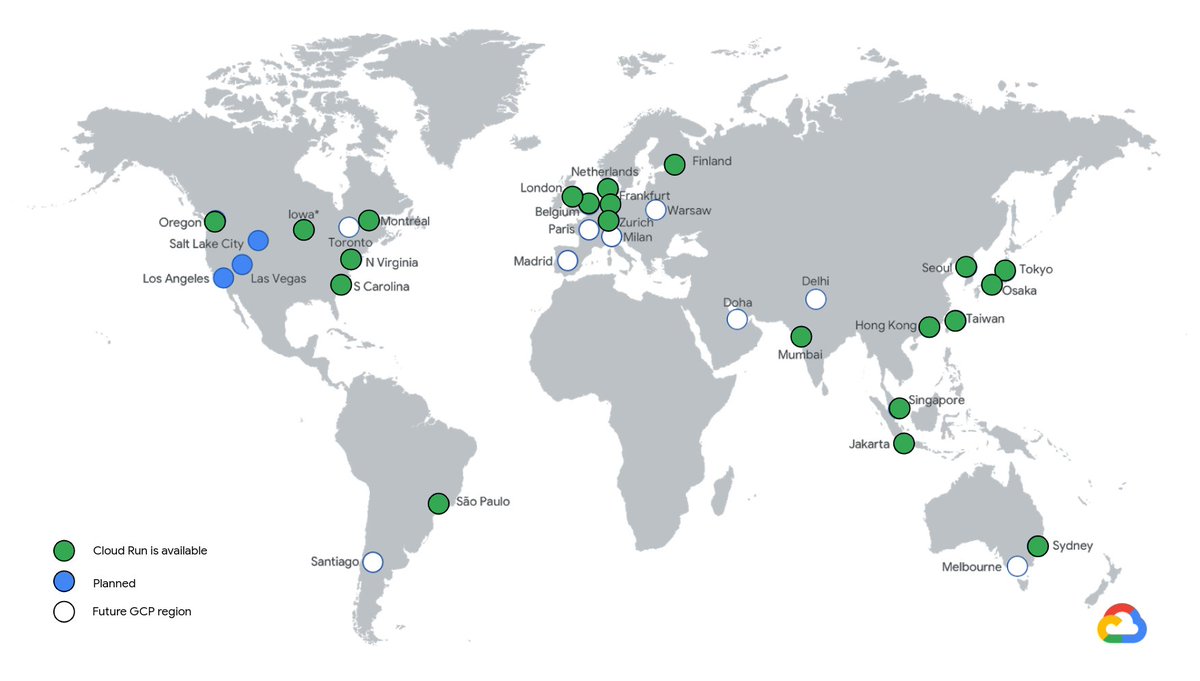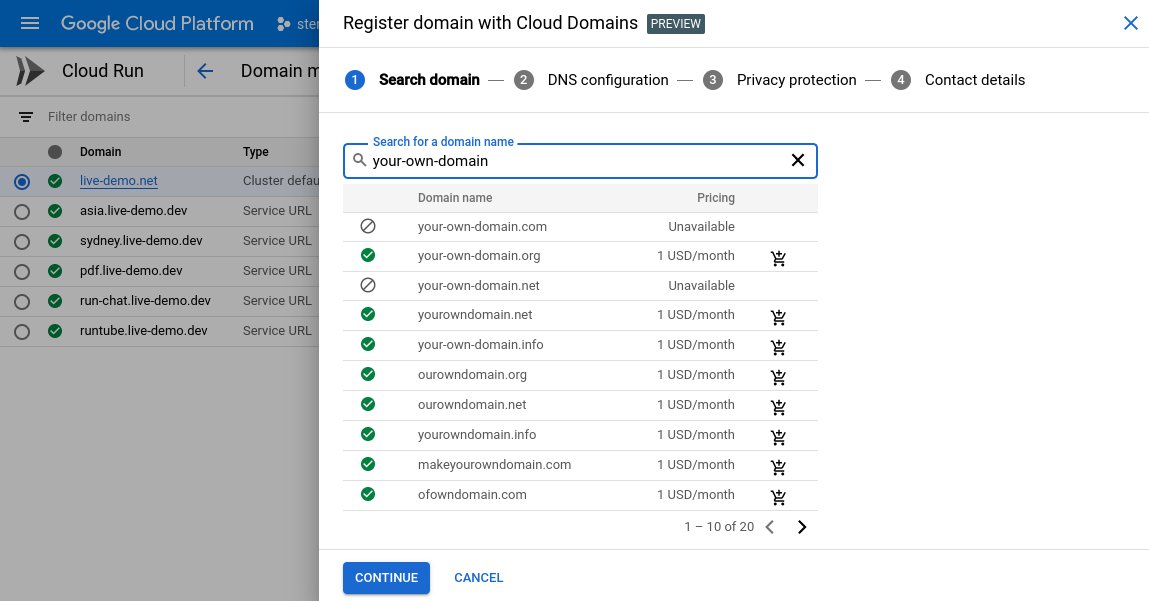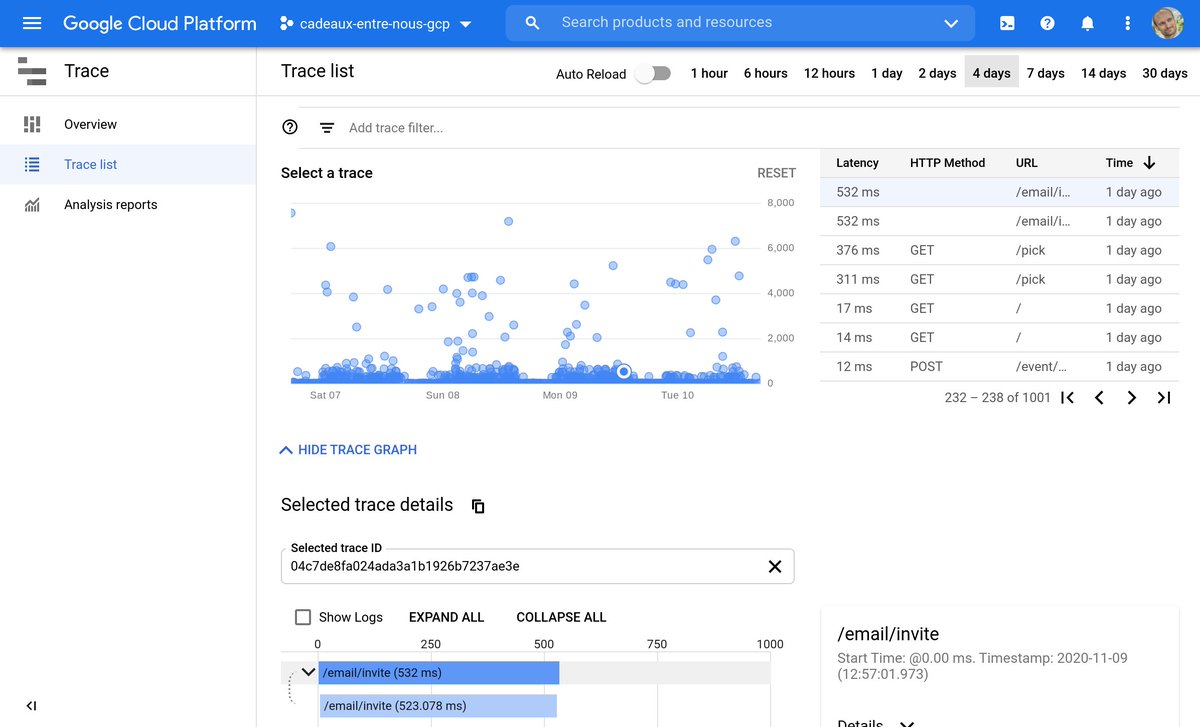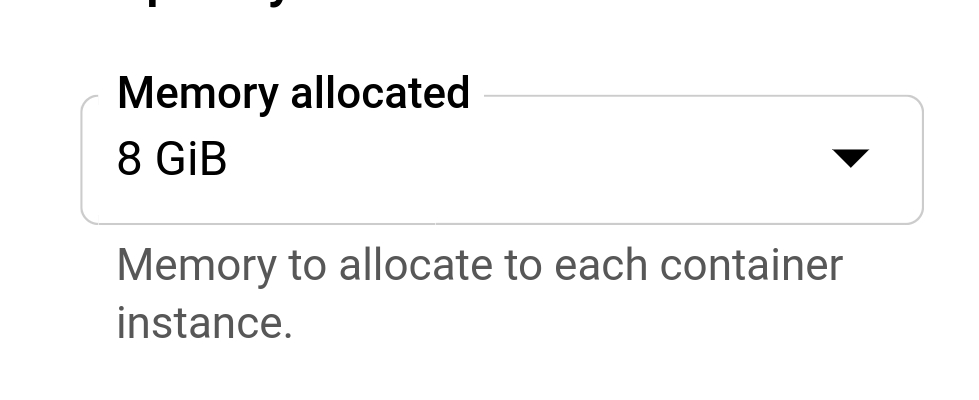 Today at #GoogleNext19, we are launching Cloud Run.
Today at #GoogleNext19, we are launching Cloud Run.Allowing you to run any stateless http container in a fully managed environment, paying only for the exact resources you use.


 https://cloud.google.com/run
https://cloud.google.com/run
 Developers love serverless, but feel limited by the available programming languages or the need to rewrite using functions.
Developers love serverless, but feel limited by the available programming languages or the need to rewrite using functions.  Cloud Run brings the properties of serverless to containers: no infra management, fast autoscaling and pay per use.
Cloud Run brings the properties of serverless to containers: no infra management, fast autoscaling and pay per use.
Sometimes, you want more control or have to run on top of Kubernetes, we are also introducing Cloud Run on GKE. Allowing you to run the same serverless workloads with the same developer experience, in your own GKE cluster. https://cloud.google.com/run/docs/quickstarts/prebuilt-deploy-gke
 to the thousands alpha and beta testers who have been using Cloud Run in the past months, providing feedback and reporting issues. You helped us shape Cloud Run!
to the thousands alpha and beta testers who have been using Cloud Run in the past months, providing feedback and reporting issues. You helped us shape Cloud Run!
Cloud Run and Cloud Run on GKE both implement the @KnativeProject API. An OSS project we introduced last year.
This allows you to deploy the same autoscaled services to a fully managed GCP environment, to your own GKE cluster, or anywhere #Kubernetes runs with #Knative.
This allows you to deploy the same autoscaled services to a fully managed GCP environment, to your own GKE cluster, or anywhere #Kubernetes runs with #Knative.
 I started a collection of awesome Cloud Run related things (articles, docs, containers, tools): https://github.com/steren/awesome-cloudrun
I started a collection of awesome Cloud Run related things (articles, docs, containers, tools): https://github.com/steren/awesome-cloudrunFeel free to send suggestions via Pull Requests.
 Cloud Run integrates with @Firebase Hosting.
Cloud Run integrates with @Firebase Hosting.This allows you to create webapps with dynamic endpoints using Cloud Run. All of this behind a global CDN out of the box: https://firebase.google.com/docs/hosting/cloud-run
Very excited to partner with @stackblitz for this amazing in browser developer experience:
1. Start by picking your stack
2. Get a GitHub repo and the prod app on Cloud Run
3. Iterate on the code using an in-browser VS Code-like editor
Read more at https://medium.com/stackblitz-blog/google-cloud-meet-stackblitz-da13f4e4fc29?1
1. Start by picking your stack
2. Get a GitHub repo and the prod app on Cloud Run
3. Iterate on the code using an in-browser VS Code-like editor
Read more at https://medium.com/stackblitz-blog/google-cloud-meet-stackblitz-da13f4e4fc29?1
And we are very proud to count @datadog as a launch partner, allowing you to monitor your Cloud Run and Cloud Run on GKE services: https://www.datadoghq.com/blog/monitor-google-cloud-run-with-datadog/
If you encounter issues or have questions about Cloud Run, please post on @StackOverflow with the tag `google-cloud-run`. Many googlers and myself are monitoring this tag and will be happy to help you https://stackoverflow.com/questions/tagged/google-cloud-run
As the name implies, Cloud Run pairs great with Cloud Build.
Did you know that you can set up Continuous Deployment of your git repository to Cloud Run using Cloud Build?
Docs at https://cloud.google.com/run/docs/continuous-deployment
https://cloud.google.com/run/docs/continuous-deployment
Did you know that you can set up Continuous Deployment of your git repository to Cloud Run using Cloud Build?
Docs at
 https://cloud.google.com/run/docs/continuous-deployment
https://cloud.google.com/run/docs/continuous-deployment
Cloud Run now has direct support for Cloud SQL (in alpha). When enabled, we activate and configure the Cloud SQL proxy for you.
See temporary instructions here: https://stackoverflow.com/a/55892255/481649
We are working on publishing docs and moving it to Beta within 10 days. (cc @gabidavila)
See temporary instructions here: https://stackoverflow.com/a/55892255/481649
We are working on publishing docs and moving it to Beta within 10 days. (cc @gabidavila)
One month after the launch of Cloud Run, we are pleased to launch several new features to address your top requests:
 Cloud SQL support,
Cloud SQL support,
 Metric at a glance,
Metric at a glance,
 Europe and
Europe and  Asia regions opening soon.
Asia regions opening soon.
Read more: https://cloud.google.com/blog/products/serverless/cloud-run-bringing-serverless-to-containers
 Cloud SQL support,
Cloud SQL support,  Metric at a glance,
Metric at a glance, Europe and
Europe and  Asia regions opening soon.
Asia regions opening soon.Read more: https://cloud.google.com/blog/products/serverless/cloud-run-bringing-serverless-to-containers
As promised, Cloud Run ( http://cloud.run ) is now available in  Europe and
Europe and  Asia.
Asia.
You can now picked from these 4 GCP regions:
- asia-northeast1 (Tokyo)
- europe-west1 (Belgium)
- us-central1 (Iowa)
- us-east1 (South Carolina)
 Europe and
Europe and  Asia.
Asia.You can now picked from these 4 GCP regions:
- asia-northeast1 (Tokyo)
- europe-west1 (Belgium)
- us-central1 (Iowa)
- us-east1 (South Carolina)
 You can now set labels on your Cloud Run services.
You can now set labels on your Cloud Run services.https://cloud.google.com/run/docs/configuring/labels
You can then filter billing, logs or metrics.
Use cases include cost center / team ownership, environments (env:prod)...
 And today, we are announcing Cloud Run for Anthos, allowing you to get the same Cloud Run developer experience and scalability on-premises: https://cloud.google.com/blog/topics/hybrid-cloud/anthos-simplifies-application-modernization-with-managed-service-mesh-and-serverless-for-your-hybrid-cloud
And today, we are announcing Cloud Run for Anthos, allowing you to get the same Cloud Run developer experience and scalability on-premises: https://cloud.google.com/blog/topics/hybrid-cloud/anthos-simplifies-application-modernization-with-managed-service-mesh-and-serverless-for-your-hybrid-cloud
 The Cloud Run API is now "v1": https://cloud.google.com/run/docs/reference/rest/
The Cloud Run API is now "v1": https://cloud.google.com/run/docs/reference/rest/This new API is an implementation of the recently released Knative Serving v1 API.
"v1" means that you can expect stability and long term support. One step closer to general availability!
 Many of you wanted to better understand how much Cloud Run scales and how many instances are scheduled. We added a new chart to the Metrics tab that should answer this question.
Many of you wanted to better understand how much Cloud Run scales and how many instances are scheduled. We added a new chart to the Metrics tab that should answer this question.E.g. if ou see "2s/s", that means 2 instances were continuously serving traffic in this second.
 Since Beta, Cloud Run has integrated with Stackdriver Error Reporting out of the box ( https://cloud.google.com/run/docs/error-reporting)
Since Beta, Cloud Run has integrated with Stackdriver Error Reporting out of the box ( https://cloud.google.com/run/docs/error-reporting)We are now surfacing a summary of your top errors right in the Cloud Run user interface:
 If you have 2 minutes, help us prioritize the next Cloud Run features by taking this short survey: https://forms.gle/irVTCQ5LTVLPXTqr6
If you have 2 minutes, help us prioritize the next Cloud Run features by taking this short survey: https://forms.gle/irVTCQ5LTVLPXTqr6
 Serverless containers for healthcare: Cloud Run is now covered by GCP HIPAA compliance https://cloud.google.com/security/compliance/hipaa/#covered-products
Serverless containers for healthcare: Cloud Run is now covered by GCP HIPAA compliance https://cloud.google.com/security/compliance/hipaa/#covered-products
 I created a Youtube playlist of my recommended Cloud Run related videos:
I created a Youtube playlist of my recommended Cloud Run related videos:
 Cloud Run is now Generally Available https://cloud.google.com/blog/products/serverless/knative-based-cloud-run-services-are-ga
Cloud Run is now Generally Available https://cloud.google.com/blog/products/serverless/knative-based-cloud-run-services-are-ga
 A broad ecosystem of partners are supporting Cloud Run: CI/CD, Observability and Security https://cloud.google.com/blog/topics/partners/expanding-the-serverless-ecosystem-for-cloud-run
A broad ecosystem of partners are supporting Cloud Run: CI/CD, Observability and Security https://cloud.google.com/blog/topics/partners/expanding-the-serverless-ecosystem-for-cloud-run
 Along with General Availability, came many new http://cloud.run features.
Along with General Availability, came many new http://cloud.run features.@glaforge and I wrote about them in https://cloud.google.com/blog/products/serverless/a-developers-guide-to-new-features-in-cloud-run
 The Service Level Agreement (SLA) for Cloud Run (fully managed) has been updated to 99.95% https://cloud.google.com/run/sla
The Service Level Agreement (SLA) for Cloud Run (fully managed) has been updated to 99.95% https://cloud.google.com/run/sla
 The http://cloud.run product page has been re-designed and now includes a list of common use cases https://cloud.google.com/run/#use-cases
The http://cloud.run product page has been re-designed and now includes a list of common use cases https://cloud.google.com/run/#use-cases
If storing config as code or implementing GitOps is your thing, you will be glad to hear that you can now deploy to http://cloud.run from a local YAML file:


 Cloud Run is now available in these 5 GCP regions: North Virginia, Oregon, Netherlands, Finland, and Taiwan
Cloud Run is now available in these 5 GCP regions: North Virginia, Oregon, Netherlands, Finland, and Taiwan

 Cloud Run now has support for rollbacks, gradual rollouts (blue/green deployments), and other traffic migration manipulations between Cloud Run Revisions.
Cloud Run now has support for rollbacks, gradual rollouts (blue/green deployments), and other traffic migration manipulations between Cloud Run Revisions.Use the Cloud Console or `gcloud run services update-traffic`. More at https://cloud.google.com/run/docs/rollouts-rollbacks-traffic-migration
 The http://cloud.run user interface now displays link to the build information of the deployed container, as well as the repo and commit used to build it (if you are using a Cloud Build Trigger)
The http://cloud.run user interface now displays link to the build information of the deployed container, as well as the repo and commit used to build it (if you are using a Cloud Build Trigger)
🖧 Your Cloud Run services can now connect to VPC networks, for example to access Memorystore Redis and Memcached.
Use it now:
1. Create a Serverless VPC Access connector:
https://cloud.google.com/vpc/docs/configure-serverless-vpc-access
2. `$ gcloud alpha run services update SERVICE --vpc-connector CONNECTOR`
Use it now:
1. Create a Serverless VPC Access connector:
https://cloud.google.com/vpc/docs/configure-serverless-vpc-access
2. `$ gcloud alpha run services update SERVICE --vpc-connector CONNECTOR`
 @GCPcloud has released a set of Buildpacks to help you build containers in Go, Node.js, Python, Java and .Net without having to maintain any Dockerfile.
@GCPcloud has released a set of Buildpacks to help you build containers in Go, Node.js, Python, Java and .Net without having to maintain any Dockerfile.The resulting containers are optimized for production and for the Cloud Run environment.
https://github.com/GoogleCloudPlatform/buildpacks
 Cloud Run is now supported in Cloud Code for both @code and @intellijidea.
Cloud Run is now supported in Cloud Code for both @code and @intellijidea.1 Bootstrap with samples
2 Explore your services
3 Deploy
- VSCode: https://marketplace.visualstudio.com/items?itemName=GoogleCloudTools.cloudcode
- IntelliJ: https://plugins.jetbrains.com/plugin/8079-cloud-code
 The Cloud Run user interface now allows you to copy a Cloud Run service.
The Cloud Run user interface now allows you to copy a Cloud Run service.Handy if you want to change your platform or move to a different region.
 The user interface now also allows you to directly edit the service YAML
The user interface now also allows you to directly edit the service YAMLHandy if you prefer to edit raw config files instead of clicking the nice buttons we designed for you :)
You can now use Cloud CDN on top of Cloud Run.
By sending the right `Cache-Control` headers, you can drastically reduce the load on your Cloud Run service.
Get Cloud CDN via External HTTP(S) Load Balancing: https://cloud.google.com/load-balancing/docs/negs/serverless-neg-concepts
By sending the right `Cache-Control` headers, you can drastically reduce the load on your Cloud Run service.
Get Cloud CDN via External HTTP(S) Load Balancing: https://cloud.google.com/load-balancing/docs/negs/serverless-neg-concepts


 Expose a global endpoint that routes requests to the closest Cloud Run service by using a HTTPS Global Load Balancer.
Expose a global endpoint that routes requests to the closest Cloud Run service by using a HTTPS Global Load Balancer.https://cloud.google.com/load-balancing/docs/negs/serverless-neg-concepts

 Set up Continuous Deployment from git to Cloud Run in just a few click in the Cloud Run UI.
Set up Continuous Deployment from git to Cloud Run in just a few click in the Cloud Run UI.This flow is powered by a Cloud Build trigger that automatically builds and deploys when new changes are pushed to your repo. https://cloud.google.com/run/docs/continuous-deployment-with-cloud-build
Cloud Run can now connect to Shared VPCs.
Allowing you to connect to private IPs of resources from other GCP projects of the same organization.
Read more: https://cloud.google.com/run/docs/configuring/connecting-vpc#shared-vpc
Allowing you to connect to private IPs of resources from other GCP projects of the same organization.
Read more: https://cloud.google.com/run/docs/configuring/connecting-vpc#shared-vpc

 You can now reach a specific Cloud Run revision by "tagging" it, it is then available at a dedicate URL https://[tag]---[servie-url].a.run.app
You can now reach a specific Cloud Run revision by "tagging" it, it is then available at a dedicate URL https://[tag]---[servie-url].a.run.appThis completes the gradual rollout story.
Read more on the @GCPcloud blog: https://cloud.google.com/blog/products/serverless/cloud-run-now-supports-gradual-rollouts-and-rollbacks
 Data Residency: We made it clearer that when you create a Cloud Run service in a region, your data and container stay in that region.
Data Residency: We made it clearer that when you create a Cloud Run service in a region, your data and container stay in that region.https://cloud.google.com/terms/data-residency

 When setting up Continuous Deployment from the Cloud Run user interface, you can now select a repository that contains Go, Node.js, Python Java or .NET Core code. It will be built using Google Cloud Buildpacks without needing a Dockerfile ( https://github.com/GoogleCloudPlatform/buildpacks)
When setting up Continuous Deployment from the Cloud Run user interface, you can now select a repository that contains Go, Node.js, Python Java or .NET Core code. It will be built using Google Cloud Buildpacks without needing a Dockerfile ( https://github.com/GoogleCloudPlatform/buildpacks)
 Introducing Google Cloud API Gateway. A fully managed gateway for your Cloud Run services.
Introducing Google Cloud API Gateway. A fully managed gateway for your Cloud Run services.See it in action at
Read more at https://cloud.google.com/api-gateway
We partnered with @pomerium_io, an open source identity-aware proxy, to enable you to build secure internal applications on Cloud Run. https://cloud.google.com/community/tutorials/cloud-run-with-pomerium-for-end-user-access
 Cloud Code for VSCode and IntelliJ now has support for running your Cloud Run locally, allowing you to run or debug in an emulated environment.
Cloud Code for VSCode and IntelliJ now has support for running your Cloud Run locally, allowing you to run or debug in an emulated environment.Blog post: https://cloud.google.com/blog/products/application-development/cloud-run-is-integrated-with-cloud-code
 Cloud Run now supports server-side HTTP and gRPC streaming.
Cloud Run now supports server-side HTTP and gRPC streaming.This means HTTP responses are not limited to 32MB anymore if you use chunked transfer-encoding.
 Cloud Run now sends a SIGTERM signal before a container instance is shut down. If handled, CPU is allocated for 10s max
Cloud Run now sends a SIGTERM signal before a container instance is shut down. If handled, CPU is allocated for 10s maxThis allows for graceful instance termination, giving your code some time to close any database connection or send some last telemetry data.
 Static outbound IP:
Static outbound IP:You can now route all outbound requests to your VPC network, allowing you to configure a static outbound IP address via Cloud NAT.
Check out @ahmetb's tutorial: https://cloud.google.com/run/docs/configuring/static-outbound-ip

 Goodbye cold starts: You can now specify a minimum number of container instances to be kept warm and ready to serve requests.
Goodbye cold starts: You can now specify a minimum number of container instances to be kept warm and ready to serve requests.When they are not serving requests, CPU is 10x cheaper than normal.
https://cloud.google.com/run/docs/configuring/min-instance
 Bringing Cloud Run to even more GCP regions: Hong Kong, Seoul, Jakarta, Mumbai, London, Frankfurt, Zurich, Sao Paulo. 21 regions and counting...
Bringing Cloud Run to even more GCP regions: Hong Kong, Seoul, Jakarta, Mumbai, London, Frankfurt, Zurich, Sao Paulo. 21 regions and counting...
Did you know you can purchase domain names right from the GCP console with Cloud Domains?
The Cloud Run user interface now lets you to do that in context:
The Cloud Run user interface now lets you to do that in context:
Cloud Run now integrates out of the box with Cloud Trace, capturing request latencies, allowing you to identify latency issue easily with its trace graph:
To help us shape the future of Cloud Run, participate in our research studies: https://g.co/userresearch/xttqs5
⛗ Each Cloud Run container instance is now able to receive up to 250 concurrent requests (default is still 80).
 We published a tutorial showing how to use Cloud Run revision URLs to implement previews of GitHub pull requests: https://cloud.google.com/run/docs/tutorials/configure-deployment-previews
We published a tutorial showing how to use Cloud Run revision URLs to implement previews of GitHub pull requests: https://cloud.google.com/run/docs/tutorials/configure-deployment-previews
 To simplify getting started with Cloud Run, we added a single command to build and deploy your source code:
To simplify getting started with Cloud Run, we added a single command to build and deploy your source code: $ gcloud beta run deploy --source .
- If a Dockerfile is present, it's used
- If not, language is automatically detected with GCP Buildpacks https://cloud.google.com/blog/products/serverless/build-and-deploy-an-app-to-cloud-run-with-a-single-command
 Cloud Run now allows to restrict ingress of your services to "internal traffic" and "internal traffic and traffic from Cloud Load Balancing".
Cloud Run now allows to restrict ingress of your services to "internal traffic" and "internal traffic and traffic from Cloud Load Balancing".Basically disabling the default endpoint, making the service "private" from a networking perspective.
https://cloud.google.com/run/docs/securing/ingress

 Read on Twitter
Read on Twitter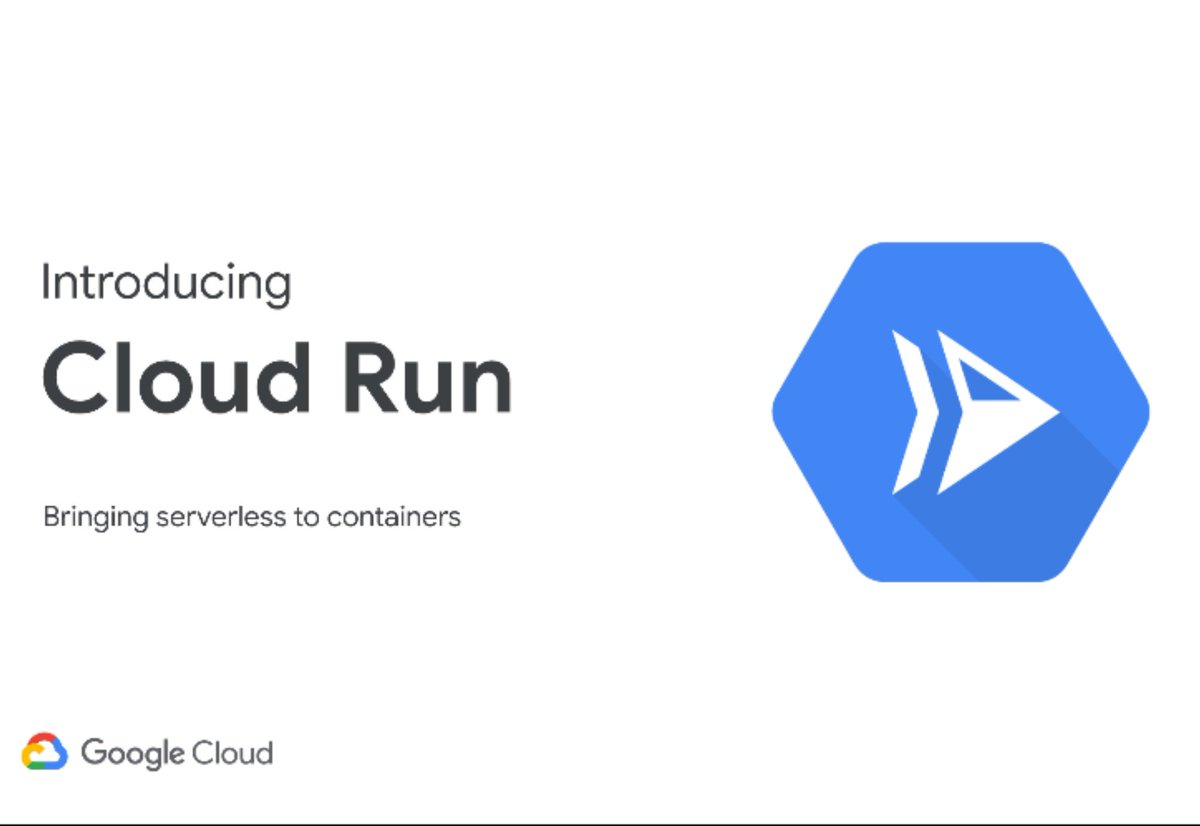

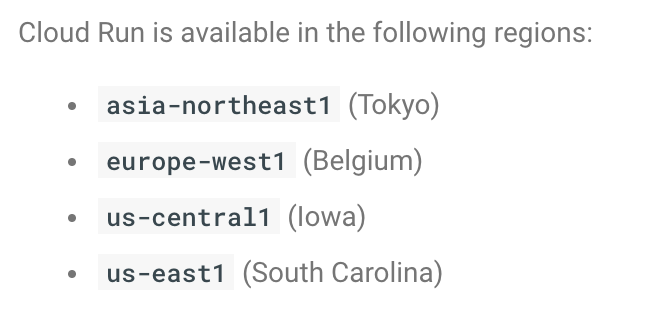
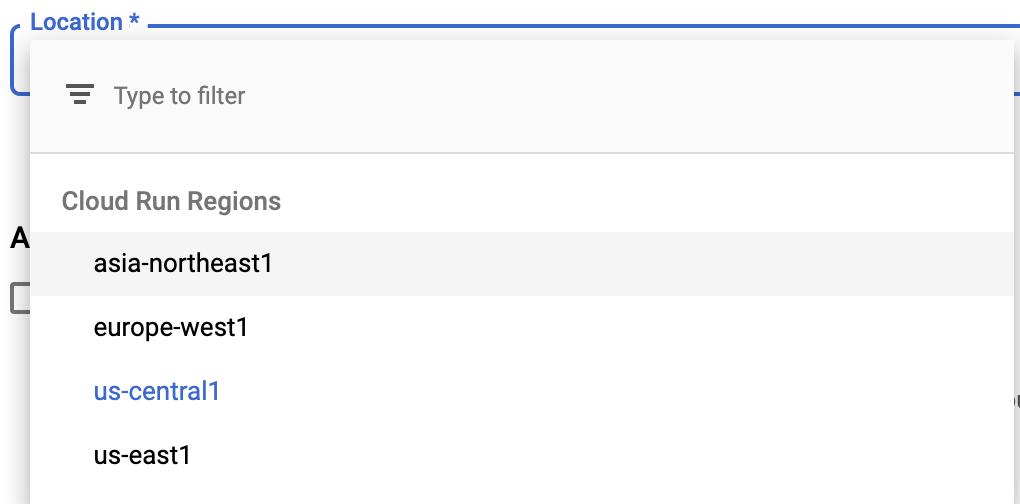
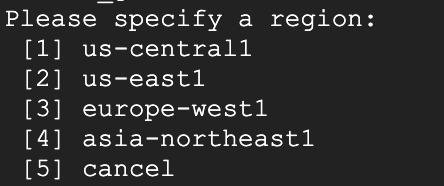
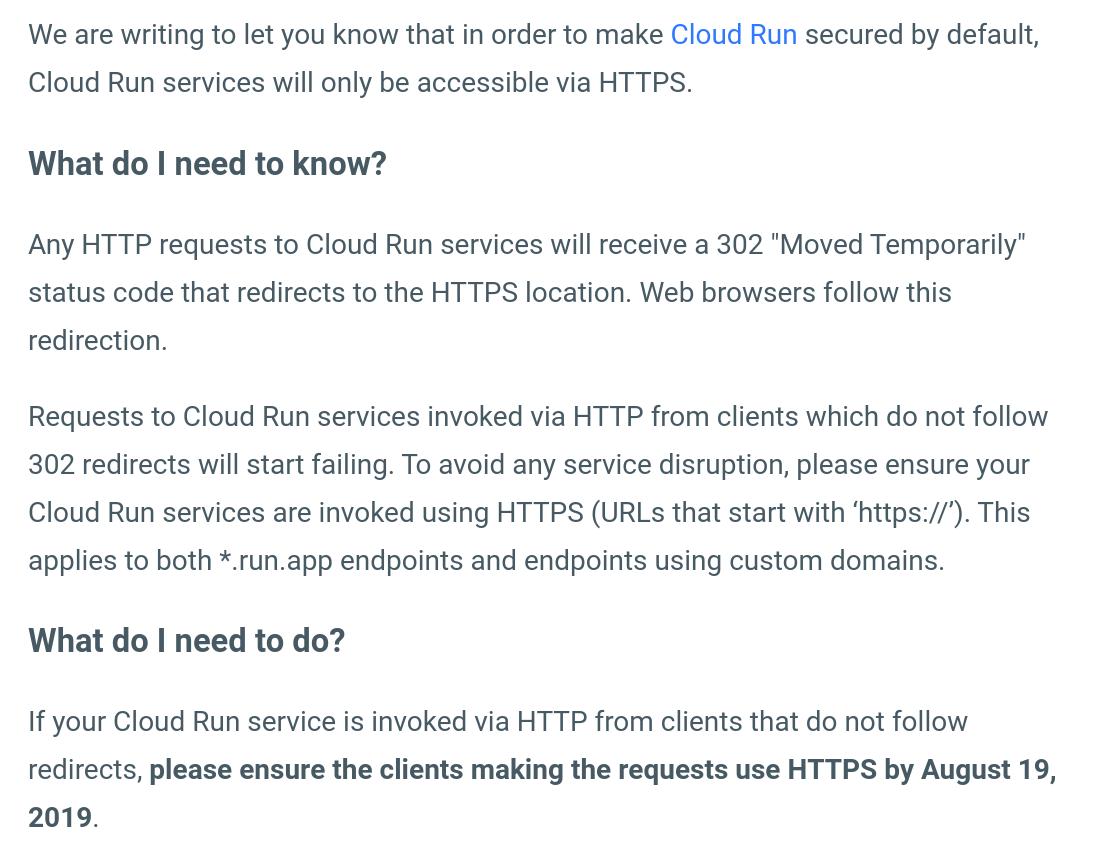
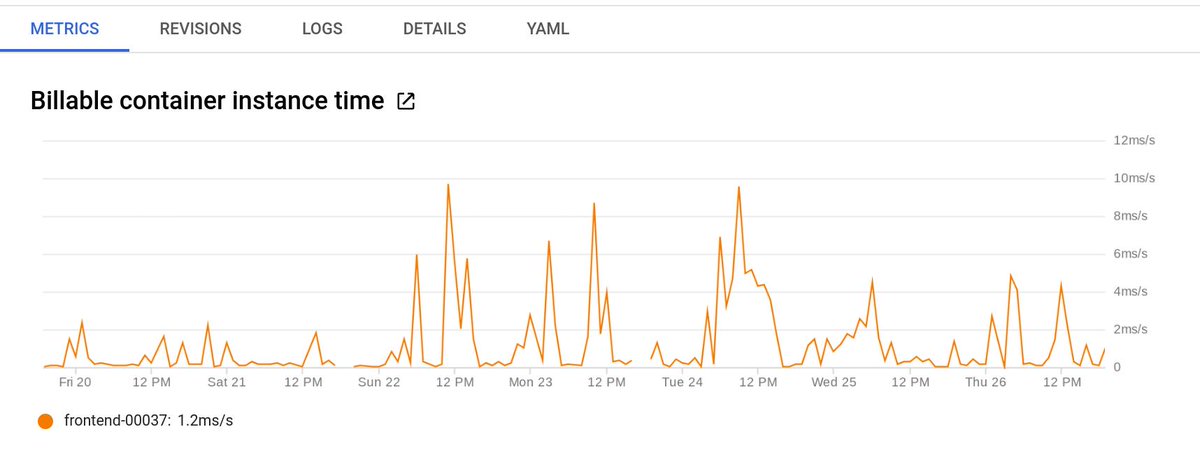
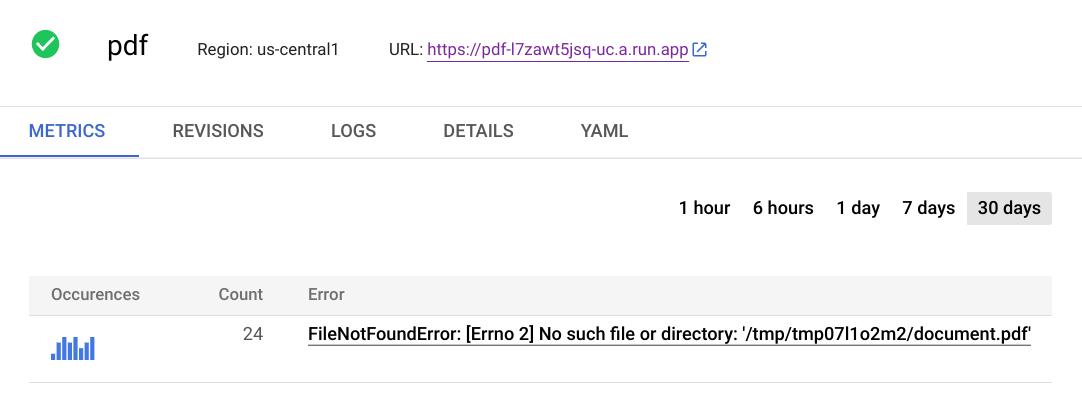
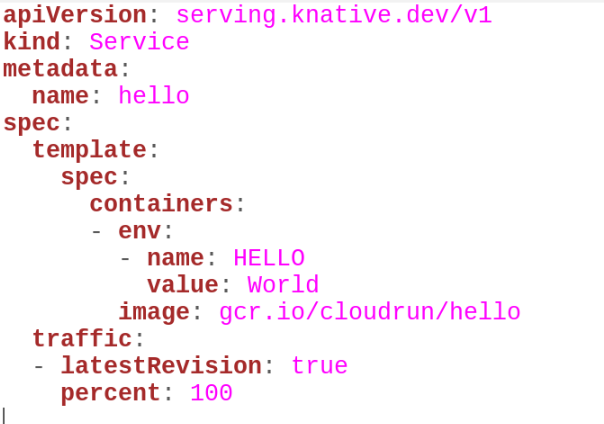

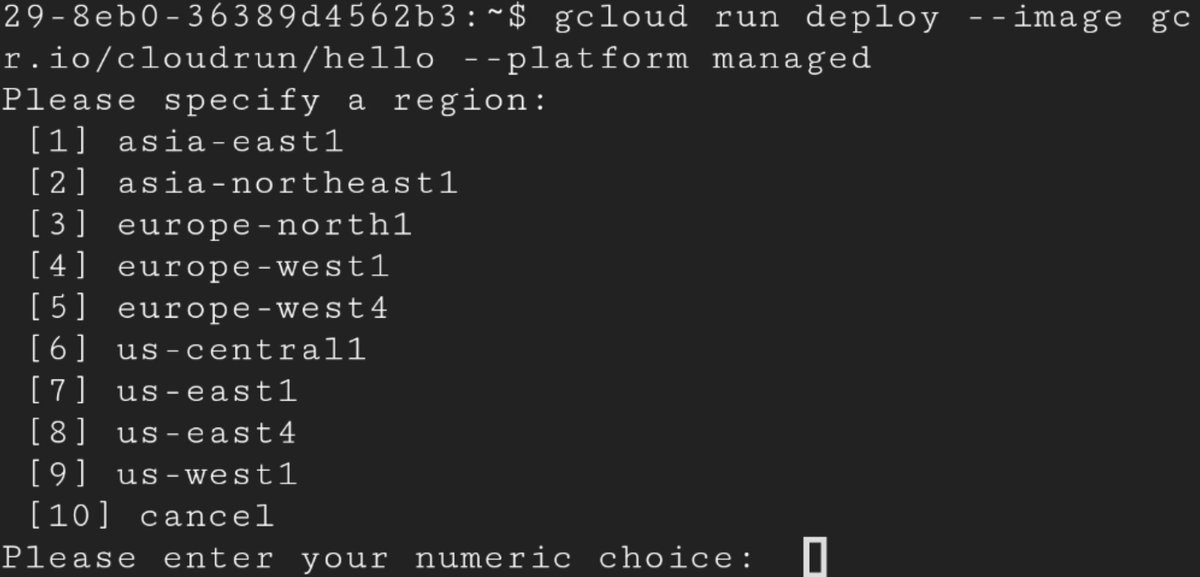
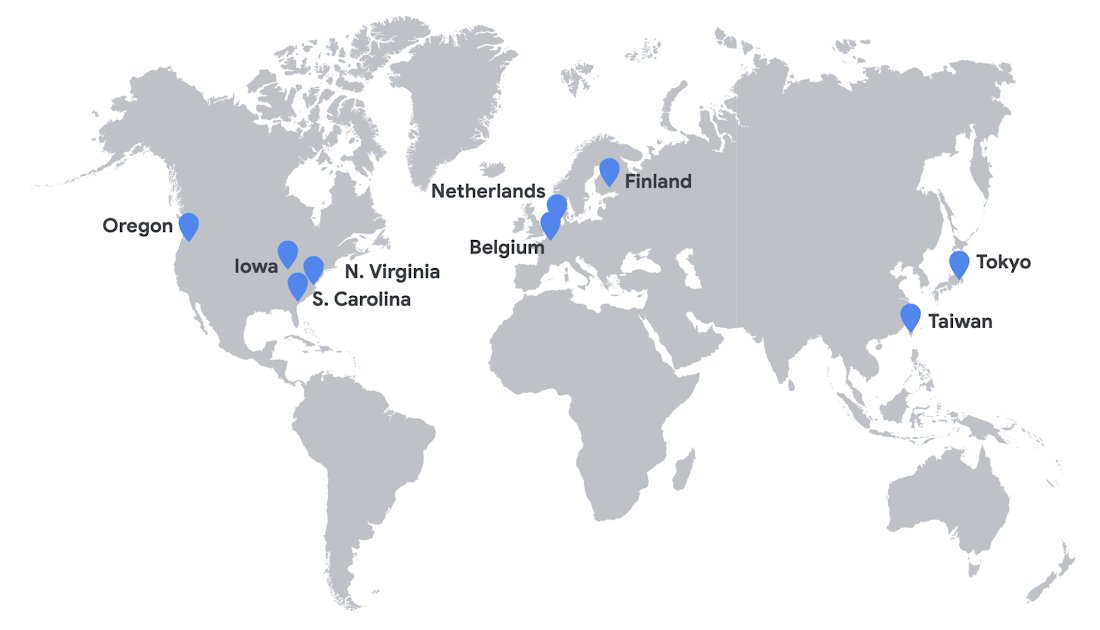
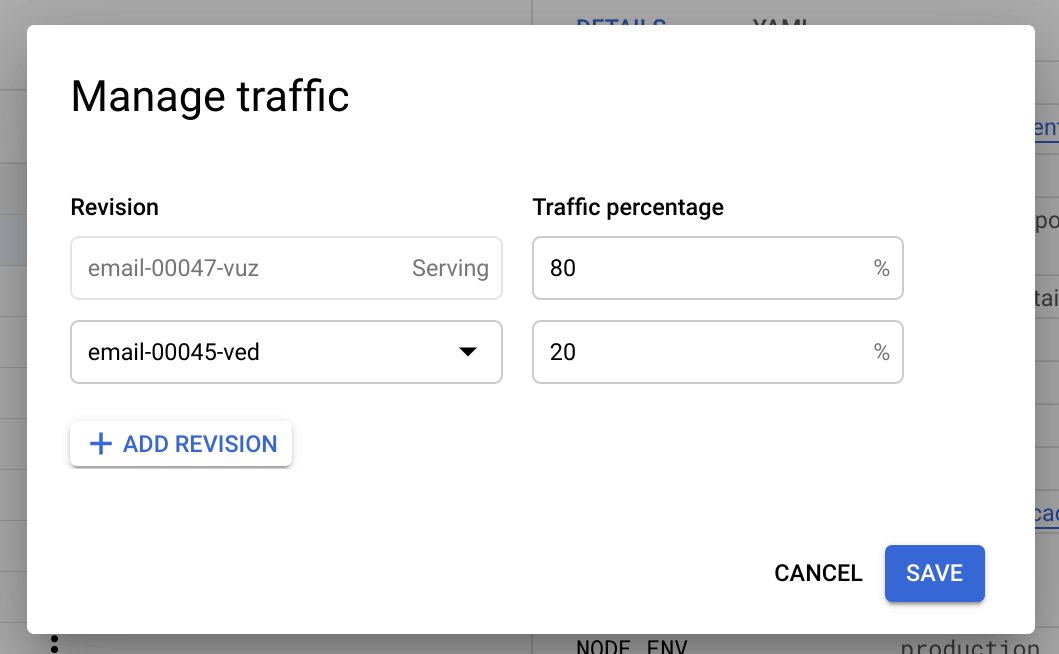

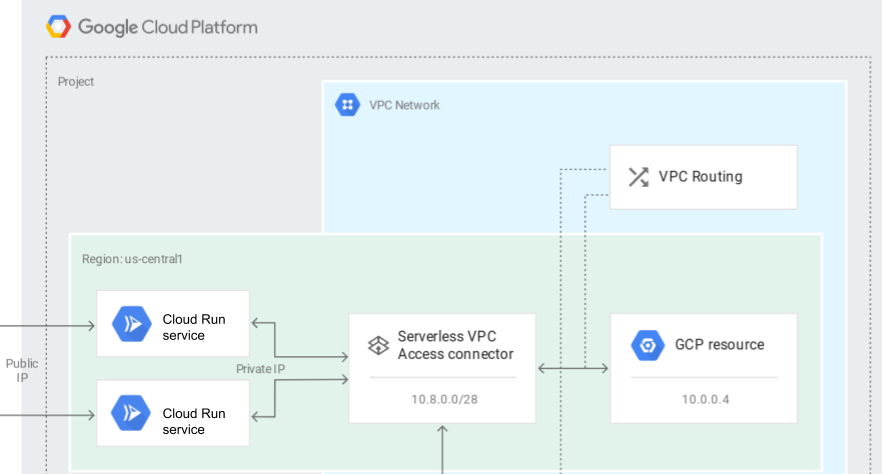
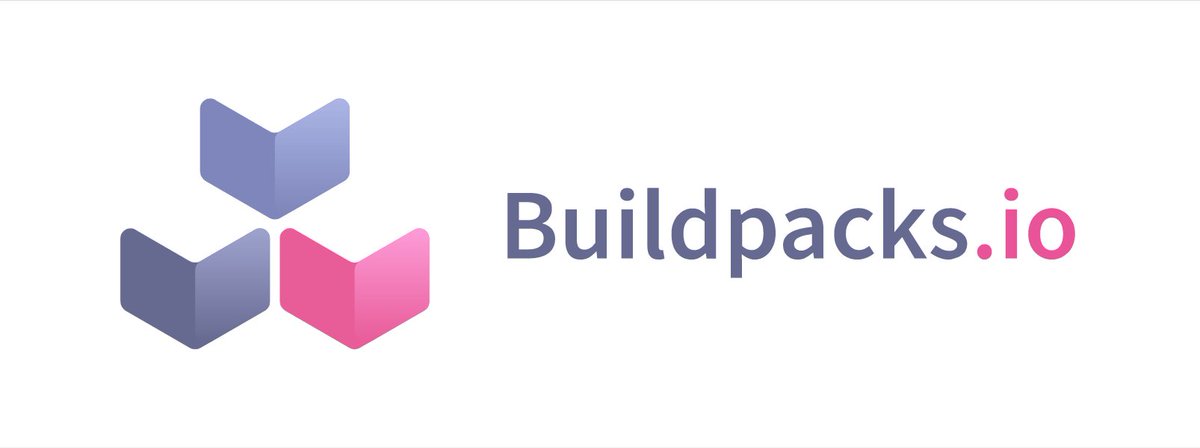
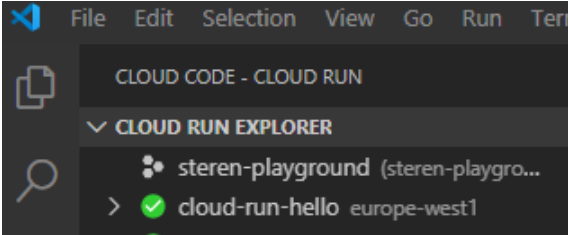


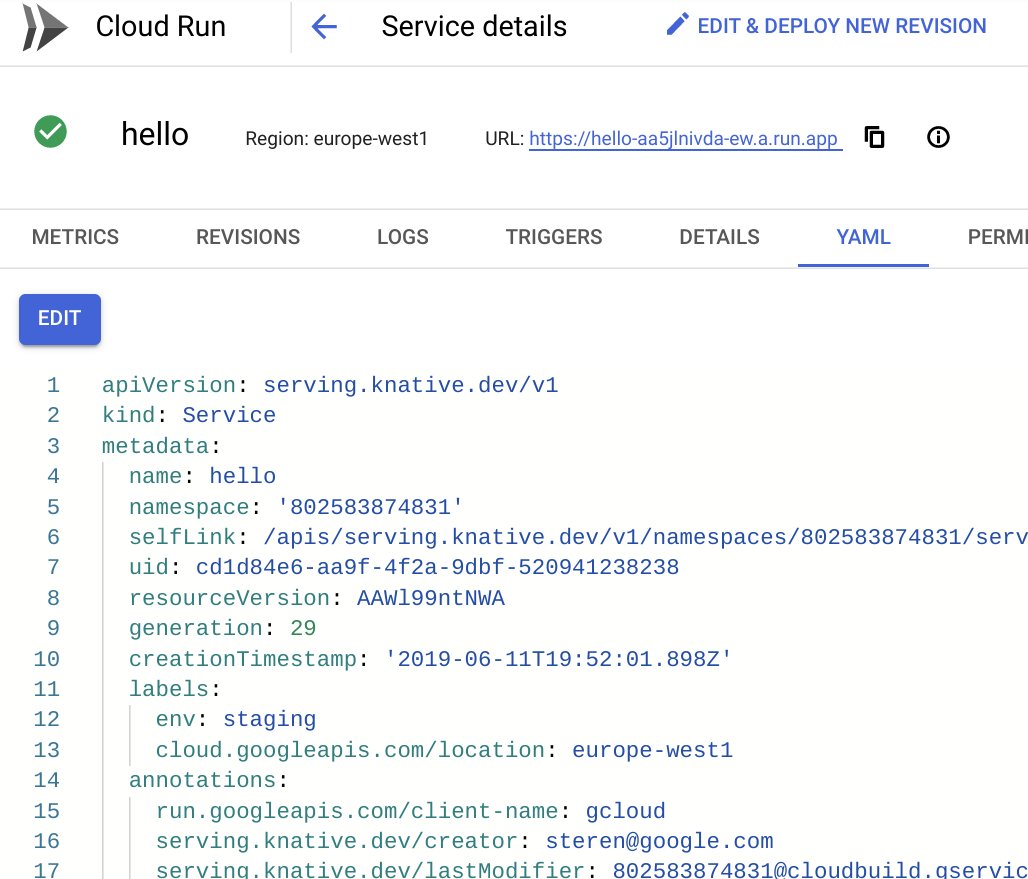
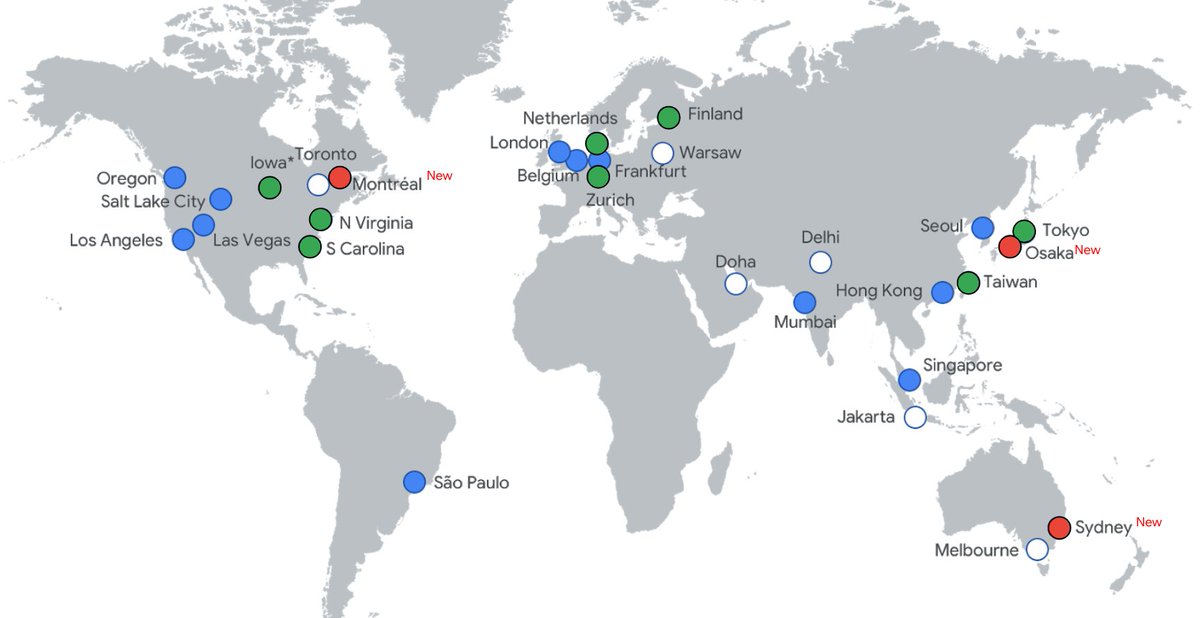
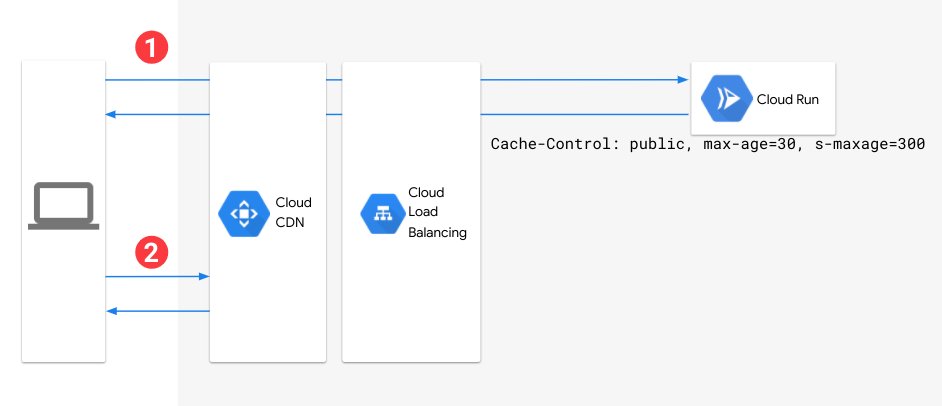
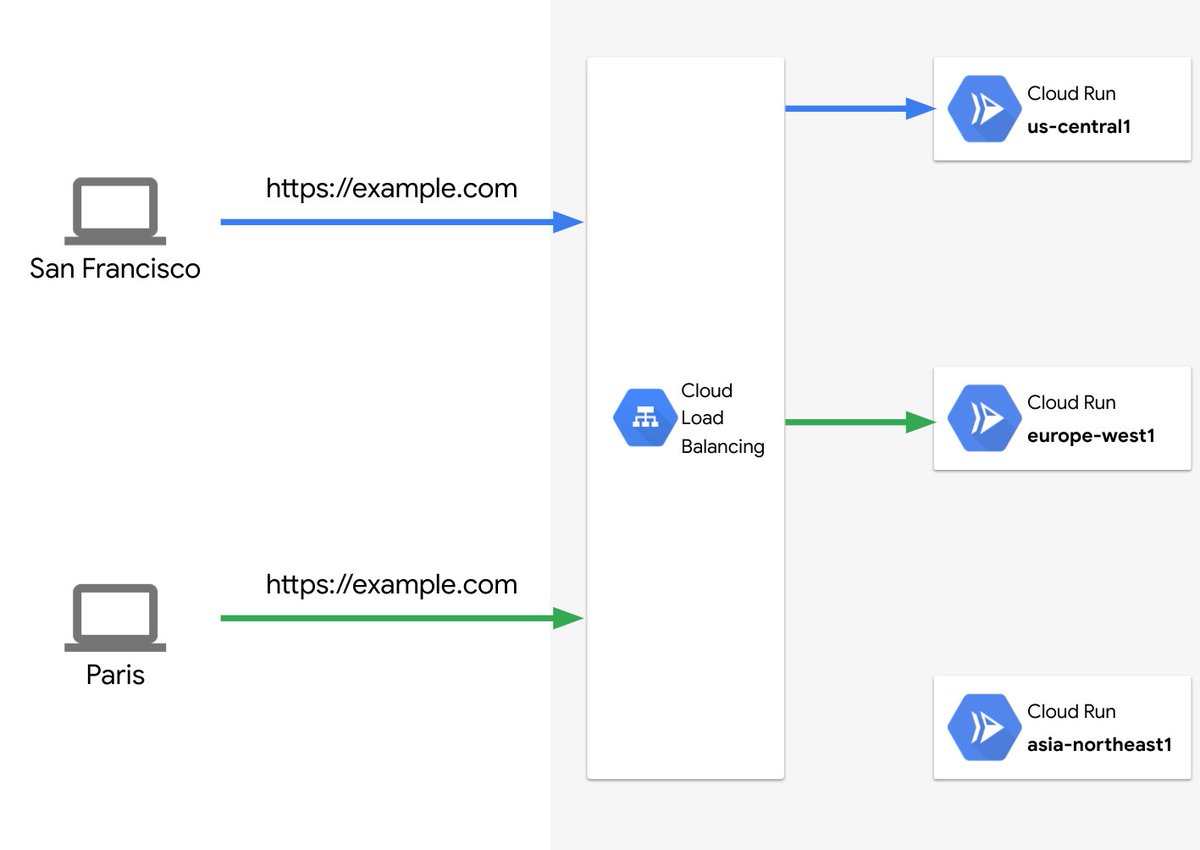
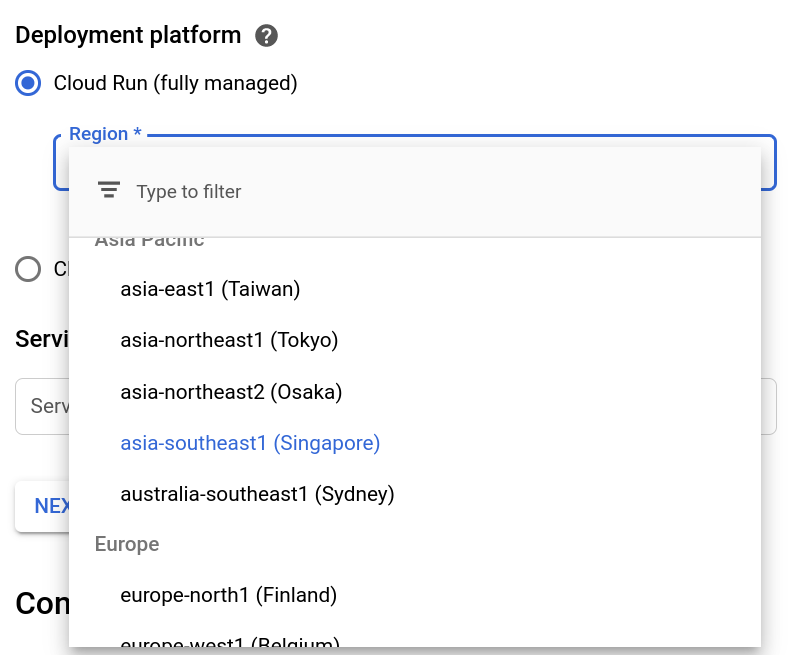
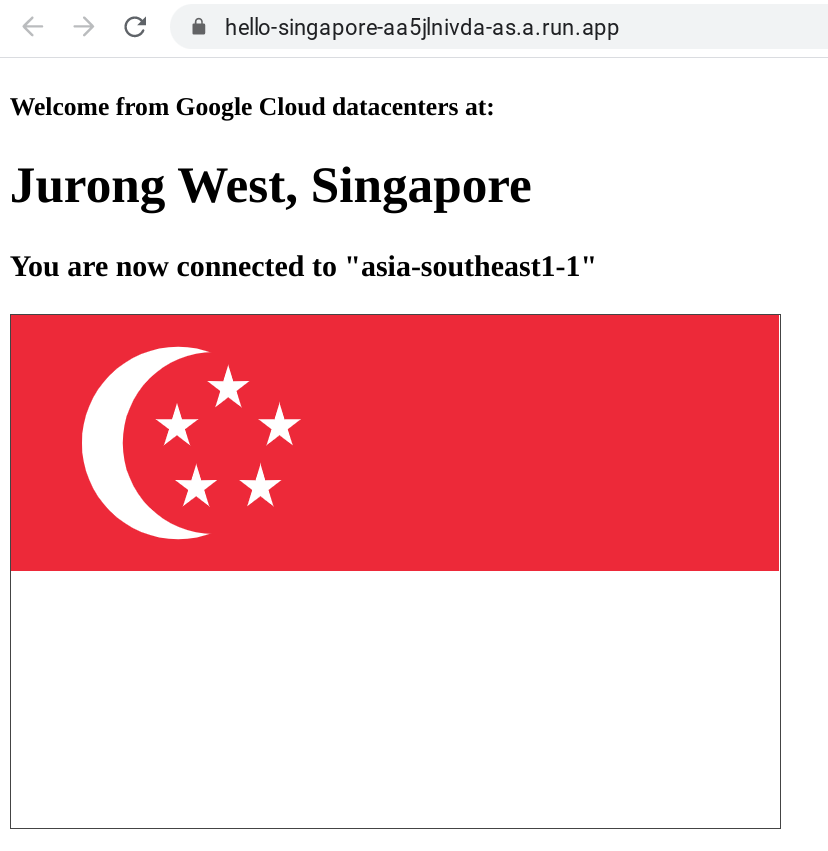

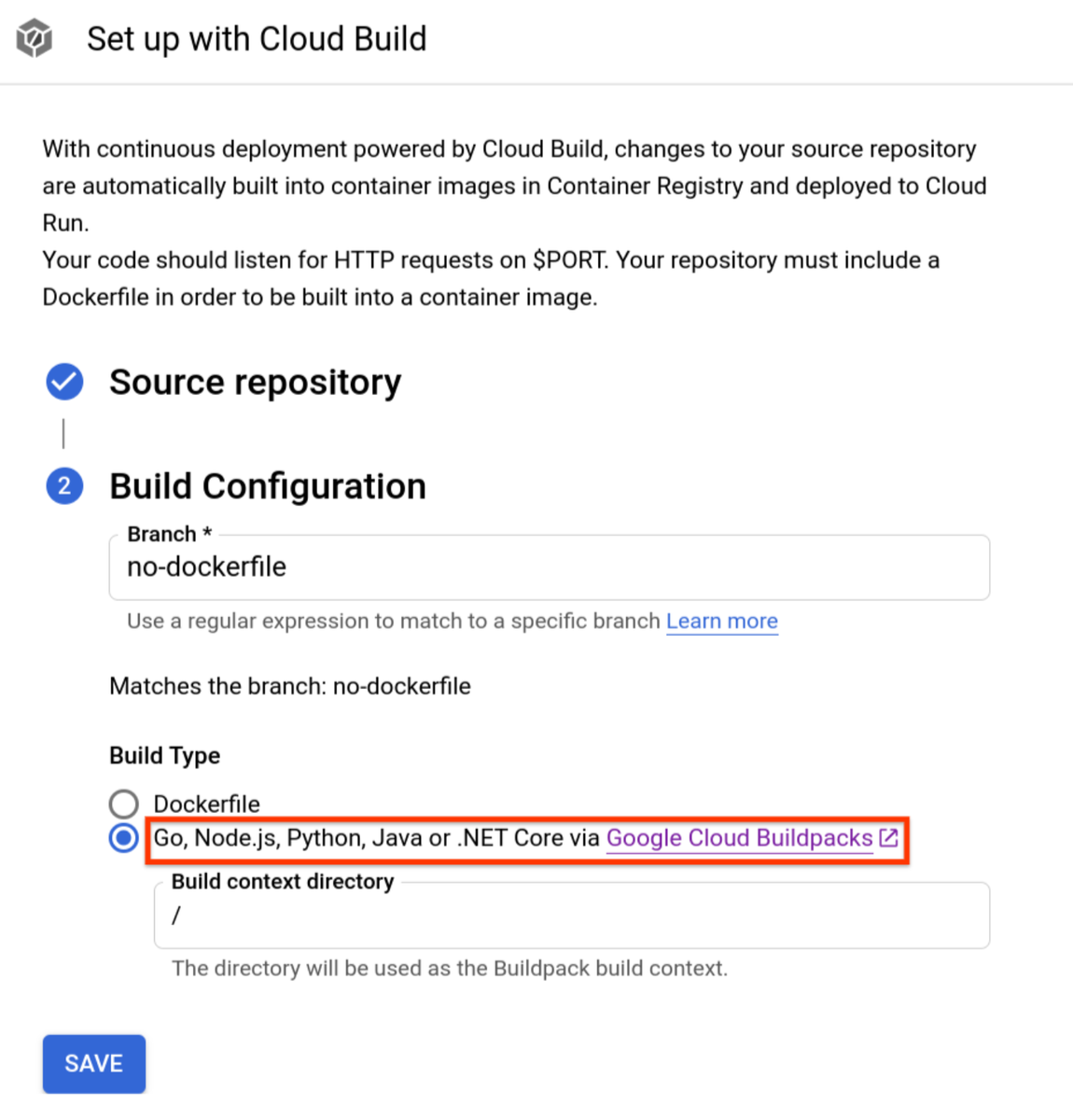
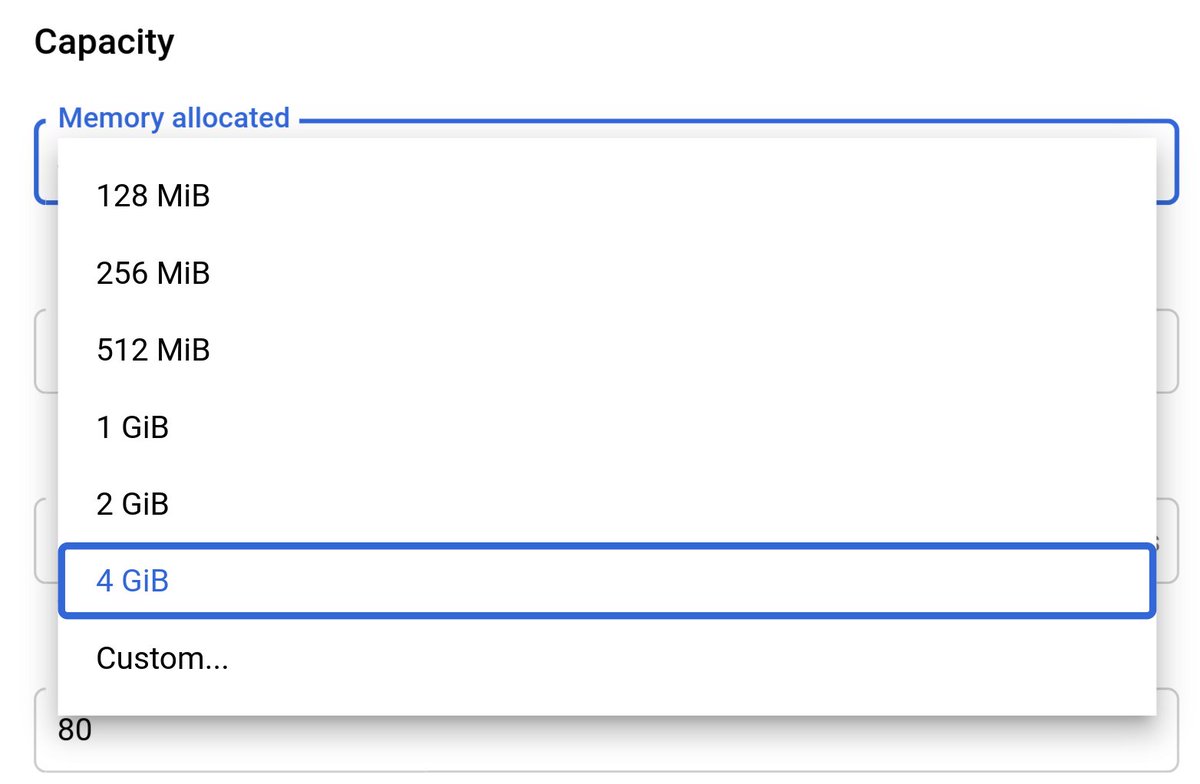
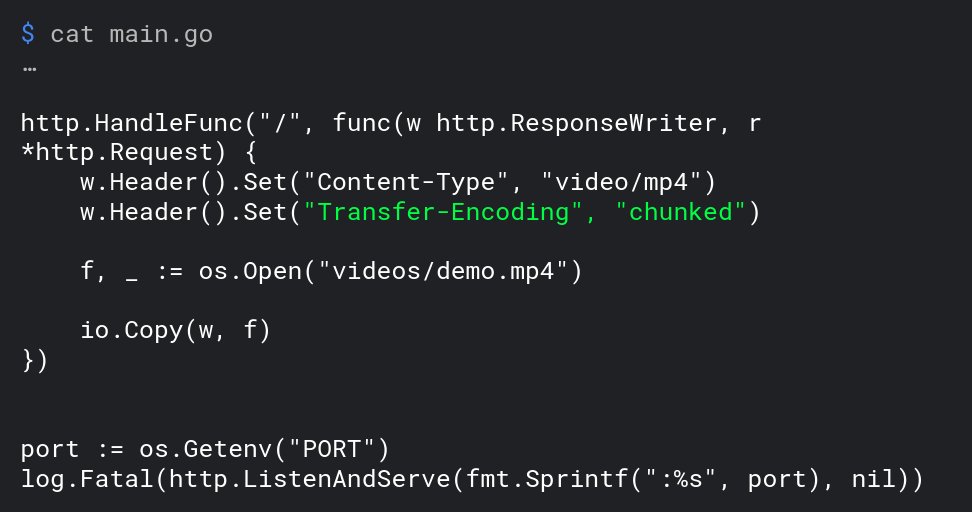
 From 15min to 1h!
From 15min to 1h!